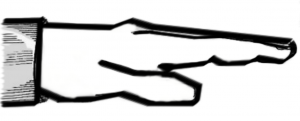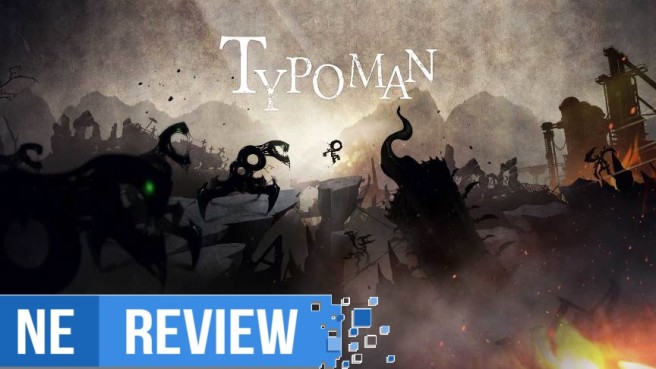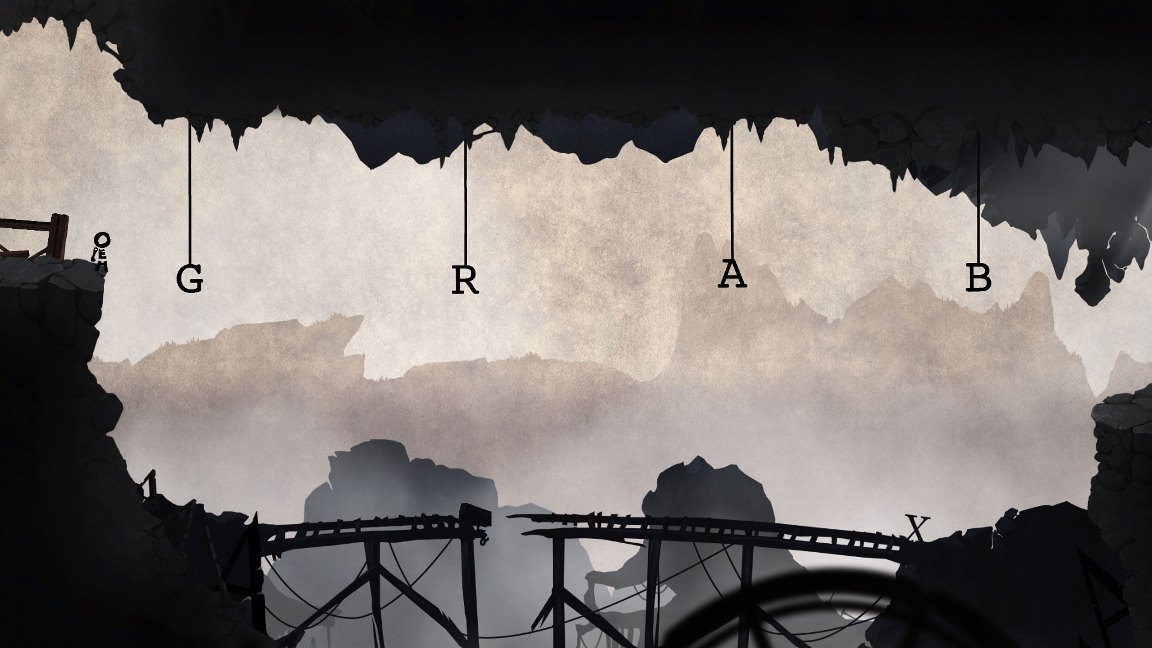[Review] Typoman
System: Wii U (eShop)
Release date: November 19, 2015
Developer: Brainseed Factory
Publisher Headup Games
Author: Travis
Typoman is a game built around words. Its puzzles are words, its platforms are words, and even its enemies are word. Yet, throughout the experience, there are three words that will stand out above the rest: creative, but disappointing.
As unique of a concept as I’ve seen on the Wii U, Typoman takes an excellent idea, but executes it with mixed results. Developers Brainseed Factory will have you smiling at some areas, and screaming at others, thanks to some clever puzzles, coupled with technical issues and a hook that quickly wears out its welcome. While not without its enjoyable moments, particularly in the first half, Typoman fails to live up to what it could have been, and is ultimately a disappointing experience.
Like most people, I was impressed with the concept of Typoman when I first saw a trailer for it in the latest Nintendo Direct. The idea is remarkable: by taking letters from one word, and attaching it to the next, or rearranging the letters within words, you can change their meaning entirely. By taking the word “RAIN”, and adding the letter “D” to the front, a previously flooded area becomes walkable. Another example, and one of my favorites: Take the letter “P” from the word “PRAISE”, and all of a sudden you have a platform lifting up. Use that “P” at the end of an area filled with deadly “GAS”, and you’ve provided yourself a safe haven from toxic chemicals. Puzzles like these are clever, and often leave you smirking the developer’s creativity.
Unfortunately, over time the puzzles begin to slip from clever to tedious. I eventually found myself looking at the GamePad more and more, where ‘hints’ on the specific word the game was looking for in order to proceed are displayed. And by hints I mean they tell you exactly what word they’re looking for.
This becomes more and more necessary as the game proceeds, as the second and third acts replace the concept of rearranging letters from two words in order to form new ones with a new mechanic, which gives you eight or nine letters and tries to make you guess the five you need in order to proceed. It felt like the developers were slowly running out of creative ways to rearrange words (which is fair, it’s tough!), so they decided to instead make their fans play Boggle for the last half of the game. The puzzles were challenging, but not as rewarding as those as the beginning of the adventure.
While the puzzles were exciting at times and mundane at others, they were definitely the stronger element in the ‘puzzle/platformer’ equation. Sporadically throughout the adventure, the game would flip into hyper-platformer mode, where incredibly specific inputs were necessary. For a player unseasoned with intense entries in the genre like Donkey Kong: Tropical Freeze, this brings things to a grinding halt. Even experienced platform-fans can expect to die between 20-30 times on some sections, without fully understanding why. Some areas seem genuinely unbeatable, thanks to how tiny the margin for area is.
If Typoman was a platformer at heart, with a slowly increasing difficulty level, sections like these wouldn’t be an issue. The majority of the title, however, is a slow-paced puzzle game, where players are encouraged to go at their own pace. As a result, areas that require intense platforming skills and lightning-quick reflexes stick out like a sore thumb, and make the game feel disjointed.
Adding to the platforming frustration is the game’s odd technical issues. A long loading time is forgivable, but it jolts around mid-level at times as areas are being loaded on the go. At a leisurely pace, it feels odd, but isn’t a problem. Unfortunately, when the action stalls for half a second while trying to execute some precision platforming, it can be downright infuriating. Thankfully, situations like this were few and far between, but still detracted from the experience.

Typoman’s art style and somber atmospheric tone give the game intrigue, and its clever puzzles will leave you impressed. However, there are too many problems working against it for its concept to be appreciated before it wears out its welcome. Had the game been one act shorter, and toned down the brutal platforming aspects, it could have gone down as a great find on the eShop. Instead, all it leaves are neat ideas with inconsistent delivery, and an experience that can frustrate even the most patient of gamers.


